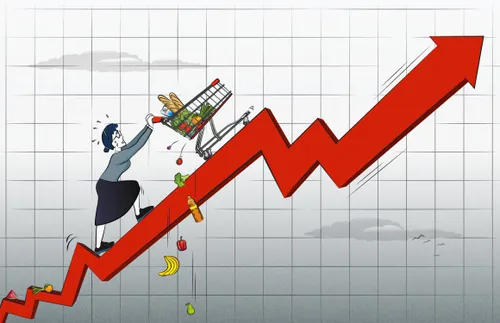Zambia’s annual inflation rate surged to 15.7 percent in October 2024, driven primarily by rising food prices, according to data from the Zambia Statistical Agency (ZamStats).
This uptick occurred alongside a K1.3 billion trade deficit, underscoring economic pressures.
Read more: Zambia faces K0.6 billion trade deficit, as inflation hits 15.6%
Acting Statistician General, Sheila Mudenda, addressing a briefing on Thursday at their offices in Lusaka, noted the inflation rate edged up slightly from 15.6 percent in September 2024, meaning prices for goods and services increased by an average of 15.7 percent over the year from October 2023 to October 2024.
Mudenda also reported that food inflation reached 18.2 percent for October, rising from 17.9 percent in September.
“This reflects an 18.2 percent annual increase in food prices,” Mudenda explained, attributing the spike to essential items like bread and cereals (including mealie meal, rice, and bread), meats (such as beef and chicken), and fish.
Non-food inflation saw a minor decrease, landing at 12.2 percent from 12.4 percent in September, driven by price drops in household items like textiles, mattresses, and appliances, as well as fuel costs.
Lusaka Province accounted for the highest contribution to the overall inflation rate, adding 4.1 percentage points, followed by Copperbelt with 3.2 points.
Central and Southern provinces contributed 2.2 and 1.8 points, respectively, while North-Western Province had the lowest impact at 0.5 points.
In trade, Zambia’s cumulative trade value from January to September 2024 rose 37.2 percent to K412.8 billion, up from K300.7 billion in the same period in 2023.
Mudenda disclosed that total exports for this period reached K209.3 billion, with road transport comprising 93.5 percent of export routes.
Imports for January to September 2024 stood at K203.4 billion, with road transport again dominant, accounting for 60.2 percent.
In September alone, Zambia registered a K1.3 billion trade deficit, a jump from the K0.6 billion deficit recorded in August.
“Exports, mainly domestically produced goods, fell by 3.8 percent from K24.6 billion in August to K23.7 billion in September,” Mudenda said, pointing to declines in copper anodes, aerated waters, and nickel ore exports.
Imports also dropped slightly, down 0.9 percent from K25.2 billion in August to K25.0 billion in September, mainly due to reduced import bills for intermediate goods like ammonium dihydrogenorthophosphate and consumer items such as gas oils.
WARNING! All rights reserved. This material, and other digital content on this website, may not be reproduced, published, broadcast, rewritten or redistributed in whole or in part without prior express permission from ZAMBIA MONITOR.












Comments